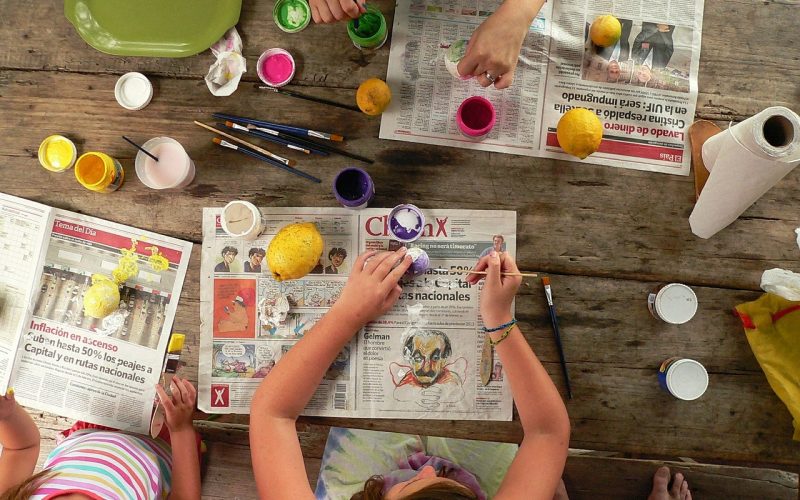Although you may be tempted to drill math into your preschooler or have him keep practicing his reading until he is well above grade level, it’s also important to give your child time to learn softer skills like creativity, coordination, and self-expression. One of the best ways to do this is to allow time for your child to participate in arts and crafts. Helping your child become more innovative, inquisitive, and creative can help him or her grow into a very successful adult, and these qualities will be useful no matter what type of job they take later in life.
What are Arts and Crafts?
As a parent, it’s important that you understand the difference between arts activities and crafts activities, so that you can make sure you child engages in both. Arts activities are open ended where your child can create whatever he or she wants to create. These activities have no definite end point; they are only done when they are done. A typical arts activity is painting or drawing a picture.
Crafts activities usually involve creating something specific. This is less open-ended and more goal oriented. Your child will still have some artistic choices to make, but they will be confined by the craft that they are constructing. Common craft activities include making and decorating a picture frame or building a birdhouse. Arts activities and craft activities engage your child’s creativity in different ways, so it’s important to structure their time to include both. Here are three tips to help you get started.
Allowing and Preparing for Mess
If you want your child to feel truly unrestrained and free to express themselves, you need to make sure that they aren’t worried about making a mess. Before painting or other messy activities, try to cover the area with old towels or newspapers and let your child know that making a mess is okay during their art time.
Let Them Do the Creating
During an art activity, don’t give your child too many directions. Leave it open-ended. Also try to avoid creating art yourself. This may cause your child to make comparisons or he may start copying you instead creating for himself.
Compliment and Support Their Work
Once they’re done, give them positive and specific compliments. Do your best not to critique or tell them to make changes to their art, at least not at first.
